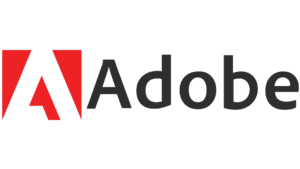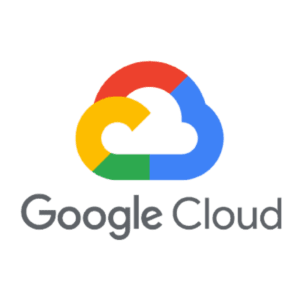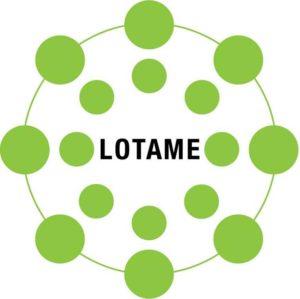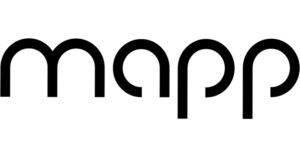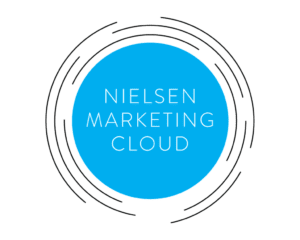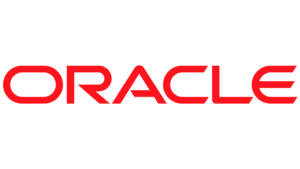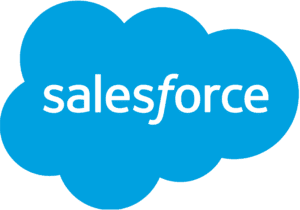A data management platform (DMP) is a data analysis and data management software solution used by many companies to aggregate, store, and analyze data from multiple sources. These many sources include a company’s own systems and third party data. Most big data management platforms have features that complement data analytics software as key tools to help organize audiences into specific segments.
While all DMPs offer these core features, there is a lot of variation in how they function.
Some data management platforms act like data warehouse tools for marketing data. They collect data from multiple sources and integrate it into many different applications. These data management platforms are essentially the “pipes” connecting a diverse set of data tools.
Other DMPs are integrated with demand-side platforms, or DSPs. DSPs automate media buying across digital platforms, helping organizations find the most cost-effective way to reach their target audience and find appropriate second party data, third party data, and even first party data. These DMPs function as add-ons, providing more value to the core DSP.
Several other DMPs fall outside these two broad categories. They might integrate with CRM systems or act as a part of a media outlet’s tools, which they use to court advertisers. Moving forward, data management platforms will increasingly incorporate machine learning and artificial intelligence.
Because data management platforms come in so many different varieties, shopping for the best vendor can be complex. Read on for tips on how to select the right tool for your business data needs.
How to select a data management platform
The following tips can help you find the best DMP for your organization:
- Consider your needs before researching products. Do you want a full-featured media-buying platform or just basic data management capabilities? If you don’t understand your needs in advance, you can easily end up investigating products that don’t have the features you need or that offer unnecessary features that increase costs.
- Make sure you are comparing similar products and their values. The disparity of product features makes it difficult to compare pricing. Compounding the problem, few of the vendors featured in this list offer up-front pricing. Be prepared to sit through a lot of demos and do additional research if you want to find the best value.
- Examine the data and application integrations carefully. A good DMP will integrate data from a variety of different business sources. It should also integrate with or replace the other digital advertising tools your marketers use.
- Evaluate the analytics features carefully. Many DMPs claim to include data insight capture capabilities, but those capabilities are not all equally advanced. Make sure you have seen a platform in action and are satisfied with its performance before purchasing. Also consider if AI or ML automation is important to your data insights process.
- Don’t forget about customer service. Data management, whether it’s master data management or metadata management, is complicated. You are likely to need support when setting up and deploying your tool, as well as for ongoing maintenance and management. Take a look at reviews to see how other customers feel about the customer service they received from the vendors you are considering, and also take a look at the support page that many vendors provide.
With these tips in mind, here are ten data management platform vendors you might want to consider:
Jump to:
- Adobe Audience Manager
- Amobee
- Google Marketing Platform
- Lotame
- Mapp Cloud
- MediaMath
- Nielsen DMP
- Oracle CX Marketing
- Salesforce CDP
- The Trade Desk
Best Data Management Platforms
Adobe Audience Manager 
Although best known for its design software and other tools for creative professionals, Adobe also offers a range of tools for marketing and commerce, as well as other business solutions. Founded in San Jose, California in 1986, Adobe has grown to an $11.7 billion company with more than 22,000 employees worldwide. Its stock is traded on the NASDAQ exchange under the symbol ADBE.
This Adobe solution allows organizations to collect data from a wide variety of sources, build new audience segment models, and uncover new insights. Well-known users include Hyatt, Virgin Holidays, National Bank of Canada, Sky, and others. Forrester named it a leader in its Forrester Wave report for Data Management Platforms.
Pros
- The platform integrates closely with other Adobe products, especially other Experience Cloud software.
- The virtual model makes the software easy to access.
- It ingests both structured and unstructured data from a wide variety of sources.
Cons
- Many customers complain that it takes a long time to load data into the tool.
- The software can be difficult to learn.
- Some customers say that the product’s pricing is too high.
Amobee 
Geared as an independent advertising platform, Amobee offers end-to-end campaign and portfolio management that includes DMP capabilities. Founded in 2005 in Foster City, California, the company was acquired by Singapore-based Singtel for $321 million in 2012, but it continues to do business under the Amobee name. It has won numerous awards as a great place to work, and it has offices throughout North America, Europe, the Middle East, and the Asia-Pacific region.
The Discover tool within the Amobee platform includes many data management capabilities, such as audience intelligence, segment creation, sentiment and trends, data onboarding, and more. It also integrates with the rest of the Amobee platform for media planning, execution, optimization, and analysis. Its users include Pringles, Kia, the NBA, Evian, Spotify, Airbnb, Fiat, and many others.
Pros
- As part of a complete media platform, Amobee offers many features that other DMPs do not.
- It integrates all of an organization’s media activities and simplifies advertising management.
- The company’s sales and support representatives get top marks from customers.
Cons
- Amobee fees can be high, especially compared with DMP tools that have fewer features.
- The interface is not as user-friendly as some other options.
- Amobee offers a lot of features that may not be necessary for organizations looking only for a data management platform.
Google Marketing Platform 
Similar to Amobee, Google offers a unified marketing platform that combines data management with advertising on Google Cloud. Google, of course, is one of the most popular places to purchase advertising, bringing in $37.1 billion in revenue in the third quarter of 2020. Headquartered in Mountain View, California, it is a subsidiary of Alphabet.
Google divides the Google Marketing Platform into two different formats: small business and enterprise. In the enterprise category, it offers integration with Google Analytics, which incorporates DMP capabilities. Its features include reporting, segmentation, visualization, and predictive analytics.
Pros
- The Google Marketing Platform is an excellent option for organizations that do a lot of advertising on Google.
- It incorporates web data along with advertising audience data and analytics.
- The platform offers advanced predictive analytics that can help organizations plan their marketing strategy.
Cons
- The Google tools can ingest data from some third-party sources, but they aren’t as good as some other tools at integrating with an external data source.
- Users in developing countries sometimes complain about limited support for their local markets.
- It also lacks some channel management capabilities found on other platforms.
Pro tip: Need more advanced data management solutions that will integrate with your current toolkit? Consider working with SAS Data Management and the SAS Integration Studio.
Lotame 
Founded in 2006, Lotame is focused on offering a leading unstacked data solution. Its clients include CBC, IBM, Omnicom Media Group, McClatchy, and many other marketers, publishers, media firms, and agencies. Headquartered in New York City and Columbia, Maryland, it also has offices in Argentina, London, Mumbai, Singapore, and Sydney. Privately held, it has raised an estimated $61.7 million in venture capital.
The Lotame DMP consists of four integrated products: Lotame Lab for building, audience segments, and scaling audiences; Lotame Connect for ingesting customer data; and Lotame Data Exchange for purchasing audience data. The company takes pride in the fact that its platform is unbundled, so customers don’t have to purchase any technology or services they don’t need. It’s also media-agnostic so that users can ingest data from virtually any source.
Pros
- Lotame’s unbundled model lets customers buy only the services and technology they need.
- The company’s award-winning customer service receives rave reviews.
- The platform is very flexible, giving users the ability to import and export data to and from a wide variety of sources.
Cons
- Lotame lacks some automation features that customers would like to see.
- Some customers complain that the pricing is too high and that the company has too many incidental charges.
- The platform offers a lot of features, and the possibilities can be overwhelming until users learn how it all functions.
Mapp Cloud 
Formerly known as Mapp Digital, Mapp was founded in 1998 as a digital marketing technology company. Its customers include CBS Interactive, Lamborghini, Lloyds Banking Group, Pepsico, Unilever, and others. Privately held, the company has offices in San Diego, California, and in several European countries.
The company’s platform, Mapp Cloud, includes four distinct pieces: Mapp Acquire for customer acquisition, Mapp Engage for customer engagement, Mapp Intelligence for analytics, and Mapp Connect for APIs to connect with other tools and partners. Its DMP capabilities include centralized data collection, unified customer profiling, segmentation, and more. It also offers email marketing capabilities.
Pros
- The platform offers solutions tailored for retail, financial services, media, and agencies.
- It allows organizations to create a 360-degree view of their customers to improve marketing and boost sales.
- It incorporates email marketing and integrates with other tools to execute other types of marketing campaigns.
Cons
- Some customers complain that the tool’s interface isn’t as user-friendly as it could be.
- In addition, some people wish its social media capabilities were better.
- Some users have experienced slow response times from support.
Cons
- Some customers complain that Mapp Cloud’s interface isn’t as user-friendly as it could be.
- In addition, some people wish its social media capabilities were better.
MediaMath 
Founded in 2007, MediaMath offers a demand-side platform (DSP) with data management capabilities. It boasts more than 3,500 active advertisers, including Coca-Cola, IBM, eBay, SAS, and others. It is headquartered in New York City and has more than 500 employees.
Media Math’s platform offers a range of media buying and audience management capabilities, including campaign management, media management, creative management, targeting, identity management, and consumer segments development. Its segmentation tool can incorporate third-party data, and it coordinates campaigns across display, mobile, connected TV, video, audio, digital out of home, and native channels.
Pros
- With MediaMath, you can integrate your data management with your media-buying activities.
- Customers give it high marks for its easy-to-use interface.
- It also receives high praise for its customer service.
Cons
- MediaMath does not offer an option to purchase data management without the full platform that includes media buying and other capabilities.
- Some customers complain about the high price, although others say it is cheaper than using an agency.
- Some also say that they wish the reporting allowed more flexibility.
Nielsen DMP 
Long known as the company behind television ratings, Nielsen has branched out to offer other media-related products and services. Headquartered in New York City, it has been in business since 1923 and has operations in more than 100 countries. In 2019, it reported $6.5 billion in revenue. It is traded on the New York Stock Exchange under the symbol NLSN, and it is a component of the S&P 500.
Part of Nielsen Marketing Cloud, this platform connects to Nielsen audience data and also includes AI capabilities. Its features include media planning, profiling, segmentation, orchestration, in-flight analytics, message sequencing, reach and frequency, frequency capping, and more. It also integrates with many third-party applications.
Pros
- The ability to use Nielsen data directly sets this data management platform apart from many others.
- Nielsen’s platform also incorporates advanced artificial intelligence features that give it exceptional analytics capabilities.
- It has received several awards for being among the best DMPs available.
Cons
- Some customers complain about feeling locked into Nielsen’s contracts.
- For less experienced users, the platform can be difficult to use at first.
- A few customers expressed that the company didn’t always do a good job communicating about changes to the product.
Oracle CX Marketing 
Although best known for its database software, Oracle offers a wide range of technology products and services. Headquartered in Redwood City, California, it has been in business since 1977. It is traded on the New York Stock Exchange under the symbol ORCL, and it is a component of the S&P 500 and the S&P 100. In its fiscal 2020 filing, it reported $39.07 billion in revenue.
Oracle’s Customer Experience (CX) solution includes the Oracle BlueKai data management platform and integrates with Oracle’s database software, allowing organizations to tie their customer experience data with their financial data. It can handle both B2C and B2B, and it includes campaign management, segmentation, personalization, customer acquisition, customer intelligence, data activation, smart content, and other capabilities.
Pros
- Integration with Oracle’s database software makes this option a good choice for organizations that use other Oracle products.
- The CX solutions combine customer relationship management (CRM) capabilities with a DMP.
- The tool is very powerful but also offers an easy-to-use interface.
Cons
- This advanced solution can be complex to deploy, especially in comparison with similar data management platforms.
- The software is very full-featured but may offer too much for organizations that don’t use other Oracle software or don’t want to tie their DMP to other parts of the business.
- As an enterprise data management leader, it can be very expensive.
Salesforce CDP 
Salesforce is the world’s leading provider of customer relationship management (CRM) software and was one of the first companies to fully embrace cloud computing as its business model. It has also won numerous awards for being an admired company and a great place to work. Its headquarters is in San Francisco, California, and it is traded on the New York Stock Exchange under the symbol CRM. In the fiscal year 2020, it reported $17.1 billion in annual revenue.
As you might expect, Salesforce CDP (customer data platform) integrates closely with the Salesforce CRM platform. It is part of a portfolio that includes data capture, data quality management, identity resolution, and segmentation. It also leverages Salesforce’s Einstein AI technology. Customers who previously used Salesforce Audience Studio, a Salesforce DMP, are being funneled into Salesforce CDP as Audience Studio is being discontinued.
Pros
- Organizations that use the Salesforce CRM will appreciate Salesforce CDP’s ability to integrate with Salesforce’s other solutions.
- The platform is highly customizable, especially when it comes to data governance, risk, and compliance (GRC) measures.
- Salesforce CDP has a lot of built-in compliance capabilities that can be especially helpful for organizations that do business internationally, or those in highly regulated industries.
Cons
- Users have reported some platform bugs, and sometimes response times are slow, especially when loading data.
- While it integrates well with the Salesforce CRM, it doesn’t always integrate well with other applications for marketers.
- Customers like audience insights but feel they could have better data on ad insights for paid ads.
Pro tip: Looking for other CDP vendors? Microsoft Azure might be an option.
The Trade Desk 
Founded in 2009, The Trade Desk says that it aims to transform media for the benefit of humankind. It is primarily a demand-side platform but also offers a DMP and other media-related tools and services. The company is headquartered in Ventura, California. It is an all rights reserved, traded company on the NASDAQ under the symbol TTD, and in 2019, it reported revenue of $661 million.
The Trade Desk’s DMP technology solutions include audience segmentation, lookalike modeling, third-party customer data integration, and a data marketplace. It is part of the overall platform and not available as a separate product. Users include Anheuser-Busch, Safelite AutoGlass, Home Chef, Meineke, and others.
Pros
- Companies interested in using The Trade Desk’s media-buying capabilities will appreciate that it has a built-in DMP.
- Research firms have named The Trade Desk as a leader in its market.
- The platform gets rave reviews from customers, especially for the availability of third-party data.
Cons
- You cannot buy its DMP as a standalone product.
- It is difficult to share data sets across accounts within the data management platform.
- Some users say that they wish the reporting were more customizable.
Read next: Top Data Analysis Software
Data Management Platform Comparison Table
| DMP Software | Pros | Cons |
| Adobe Audience Manager |
· Integration with other Adobe tools · Virtual model · Ingests structured and unstructured data |
· Long load times · Difficult to learn · Expensive |
| Amobee |
· Full-featured platform · Simplifies advertising management · Excellent customer support |
· Expensive · Not user-friendly · Overwhelming features |
| Google Marketing Platform |
· Integrates with Google · Incorporates web data insights · Advanced predictive analytics |
· Inadequate integration with other data sources · Lack of support in developing countries · Inadequate channel management |
| Lotame |
· Unbundled purchasing model · Award-winning customer service · Highly flexible |
· Inadequate automation · High prices · Overwhelming features |
| Mapp Cloud |
· Tailored solutions for industry verticals · 360-degree view of customers · Incorporates email marketing |
· Not user-friendly enough · Poor social media capabilities · Poor globalization capabilities |
| MediaMath |
· Integration with DSP · Easy-to-use interface · Excellent customer service |
· No standalone DMP · Expensive · Not very flexible |
| Nielsen DMP |
· Incorporates Nielsen rating data · Advanced AI · Multiple awards |
· Lock-in · Difficult to use · Inadequate communication about updates |
| Oracle CX Marketing |
· Integration with Oracle DB · Combines CRM and DMP · Powerful features |
· Difficult deployment · Overwhelming features · Expensive |
| Salesforce CDP |
· Integration with Salesforce CRM · Highly customizable · Compliance features |
· Buggy · Lack of integration with other applications · Limited ad insights |
| The Trade Desk |
· Integrated with a DSP · Named a leader · Good customer reviews |
· No standalone DMP · Difficult to share datasets · Inadequate customization |
Read next: Database Market


